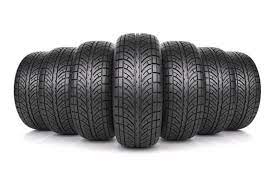What Makes Cheap Tyres Cheap
Reclaimed tyres accompanied by retreaded tyres are the most affordable kind of tyres on the market. These are used tyres that have been mounted on a certain automobile and have been roadworthy for some time. Therefore, the tread depth is decreasing, and they do not conform to current safety measures. Further, there are uncertainties associated with the extent of its degradation and the amount of lifespan that a used tyre actually has left.
Unbranded and other low-end brand tyres
The third type of budget tyres can be divided between unknown brands or cheap brand tyre manufacturers. These companies take raw materials and equipment of lower quality to manufacture tyres at extremely low prices. They look like premium tyre products, but they are not in any way equal to quality, reliability, and performance.
Cheap Tyres As Manufactured By Reliable Companies
Some of the leading Cheap tyres Birmingham manufacturers, such as Michelin, Goodyear and Pirelli, also, provide budgetary tyres apart from their premium brands. These low-cost models from well-known manufacturers can offer not only recognition of safety and compliance with all standards but, as a rule, the basic setting and materials derived from the models presented in the catalog at a higher price. Costco’s also claim that even though they last shorter than premium tyres, they are fairly good for regular driving.
Effect of Material and Technology
That is why, premium tyre makers have the freedom to set even higher prices for the tyres because they invest in sophisticated tyre technology and quality materials. This pertains to the rubber compounds used, reinforcement materials, type of tread patterns, and also the manufacturing processes do influence clearly, the measure of traction, handling, comfort, low noise, and durability. Whereas low-cost tyres can provide adequate performance, high-end car tyres are defined by safety and durability.
Recycled tyres and those with reduced tread even though they appear brand new offer a lower-quality experience. The brand name and the higher-end tyres are expensive because raw materials, technology, and engineering put into them outcompete other tyres.
What makes tyres expensive?
- Manufacturing Process and Materials
The components used in manufacturing also influence tyre pricing in a way, as does the process of manufacturing. Auto manufacturers either make affordable tyres at the lowest cost possible or, use materials of the best quality and precise constructions to develop superior, high-end types of tyres. It is often possible for cheap tyres not to use the best rubber, and quality control may be quite low; on the other hand, expensive tyres are made with a lot of accuracy using high-quality equipment and technology.
- Research and Development
There is a heavy investment by the leading tyre makers in research and technology to develop new high-value-added technologies for the tyre industry. Its experts of scientists and engineers develop tyres through research on new forms of rubber, and methods of constructing treads and patterns. The brands also gather race information and perform many on-road tests to develop the tyres for different climates and usages. Then, through the higher prices for the final products, consumers are made to pay for the research and development investment made by producers.
- Tyre Size
The general cost implication of producing branded tyres increases when they are bigger than small ones. Also, specific wheels have to fit every tyre size which is just as costly. The bigger the tyre size, the chances are that wheel alignments and suspension systems will require more consistent attention and services, adding to the cost of automobile ownership in the long run.
- Performance Factors
Two such factors relate to performance: the performance of the delivery system and the general performance of the product. Specialty product tyres that offer improvements in handling, braking, and traction come at a high research, development, and testing cost. Ref all short braking distances enhance safety but such demands high-tech tread compounds as well as casing plies for example. Tyres meant for heavy loads or commercial purposes also come in unusually big sizes, thus being slightly expensive per tyre. These are real costs in the production process; thus, they result in higher prices for the consumer.
- Tread Features
To an extent, compounded tread rubbers can enhance fuel economy, vehicle control, and the durability of the tread. Multifold tread designs improve wet/dry contact and reduce wear, which is not uniform. These parameters include tread depth, a particular model’s ability to improve ride quality, safety, durability, and noise.
So which is better?
One can save money when buying cheaper tyres; however, this will result in poor safety, poor grip on the road, and poor durability, making one buy the tyres more often than needed. Indeed, while ensuring that they are premium quality, tyres eliminate risk and offer a guarantee that you will not be involved in any accidents.
Nevertheless, the higher quality of the material, work, and engineering of expensive rims increases the traction, maneuverability, and braking characteristics. Hence, although, budget is always a concern, those additional few points that make a tyre excellent rather than just good enough are worth the few extra bucks needed to buy it. It is probable to locate tyres in consultation that would fit your pocket but at the same time the ones that offer good safety and reasonable wear and tear.




Comments
Post a Comment